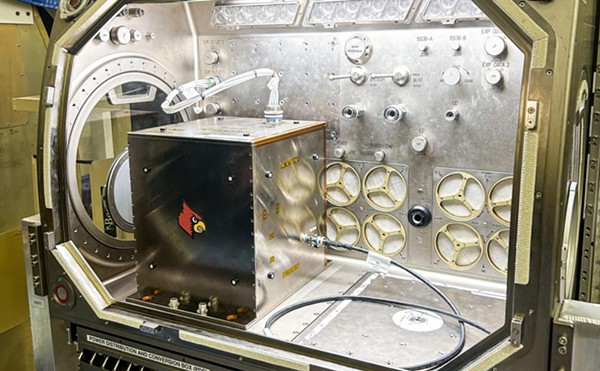
London’s Victoria and Albert Museum has one of the greatest collections of decorative and fine arts in the world. While it’s undergoing a renovation, 35 of its Medieval and Renaissance objects are on tour, with stops at the Metropolitan Museum in New York City and the High Museum in Atlanta (we’re in heady company, folks). The Speed is displaying the bulk of the show in the Tapestry Gallery, with the Leonardo notebook by itself in the English Panel Room.
The Victoria and Albert Museum’s Medieval and Renaissance works date from 300-1600. European art of the Middle Ages was largely in service to the Roman Catholic Church. Things changed during the Italian Renaissance when secular art become more prominent among the wealthy.

Another powerful monarch was England’s Henry II. His long-standing feud with Archbishop Thomas Becket culminated in Becket’s death in 1170. The exhibition has a large, highly detailed enamel reliquary casket illustrating Becket’s murder in the Canterbury Cathedral.
Florence, Italy, is the birthplace of the Renaissance, with the wealthy and powerful Medici family right in the thick of it. The show houses multiple pieces commissioned for them, including the ceramic “Medici Flask” and the bronze “Winged Putto with Fantastic Fish” sculpture by Donatello.
The most famous Renaissance artist, however, is Leonardo at Vinci. While best known for his paintings of “The Last Supper” and “Mona Lisa,” it should be his notebooks that get our attention. He always carried one — to write, draw and essentially reinvent the wheel. The 28 surviving books are housed in museums or privately owned.
The notebook on view is the “Codex Forster 1.” There are three volumes in the codex (book) group, which is named after the former owner who gave them to the museum. The book is written in Leonardo’s left-handed mirror script. Because of its separation in the English Panel Room, seeing the codex is like going into the holy of holies. You practically want to kneel before it.
Only two pages of the 55-page “Codex Forster 1” are on view, and they will not change during the exhibition. But don’t despair; there are computers in the room containing all the pages of the three Codex Forster volumes. A small amount of Leonardo’s text has been translated.
There’s not much art in the volumes. What you’ll see are written and sketched observations, inventions and geometry. Not exactly a mystery like the one in “The Da Vinci Code,” but it’s the real Leonardo.
Contact the writer at [email protected]
‘Medieval and Renaissance Treasures from the Victoria and Albert Museum’
Through April 20
Speed Art Museum
2035 S. Third St.
634-2700
www.speedmuseum.org
$10 (free to museum members)
Lectures and Gallery Talks:
(All events are at the Speed; regular admission fee applies)
• “Portrait of Jacques de Genouillac” by Wendy Pfeffer of U of L’s Department of Classical and Modern Languages — March 5, 12:30 p.m.
• “Renaissance Treasures” by Marina Karem of U of L’s Department of Art — March 18, 12:30 p.m.
• “Fiber and Fabric: Medieval Women, Textiles and Religious Communities” by University of Iowa professor Constance Berman — March 20, 6 p.m.
• “The Thomas A. Becket Reliquary” by Blake Beattie of U of L’s Department of History — April 3, 12:30 p.m.
• “Medieval Devotion to the Cult of the Virgin” by Pamela Beattie of U of L’s Department of Humanities — April 17, 12:30 p.m.





